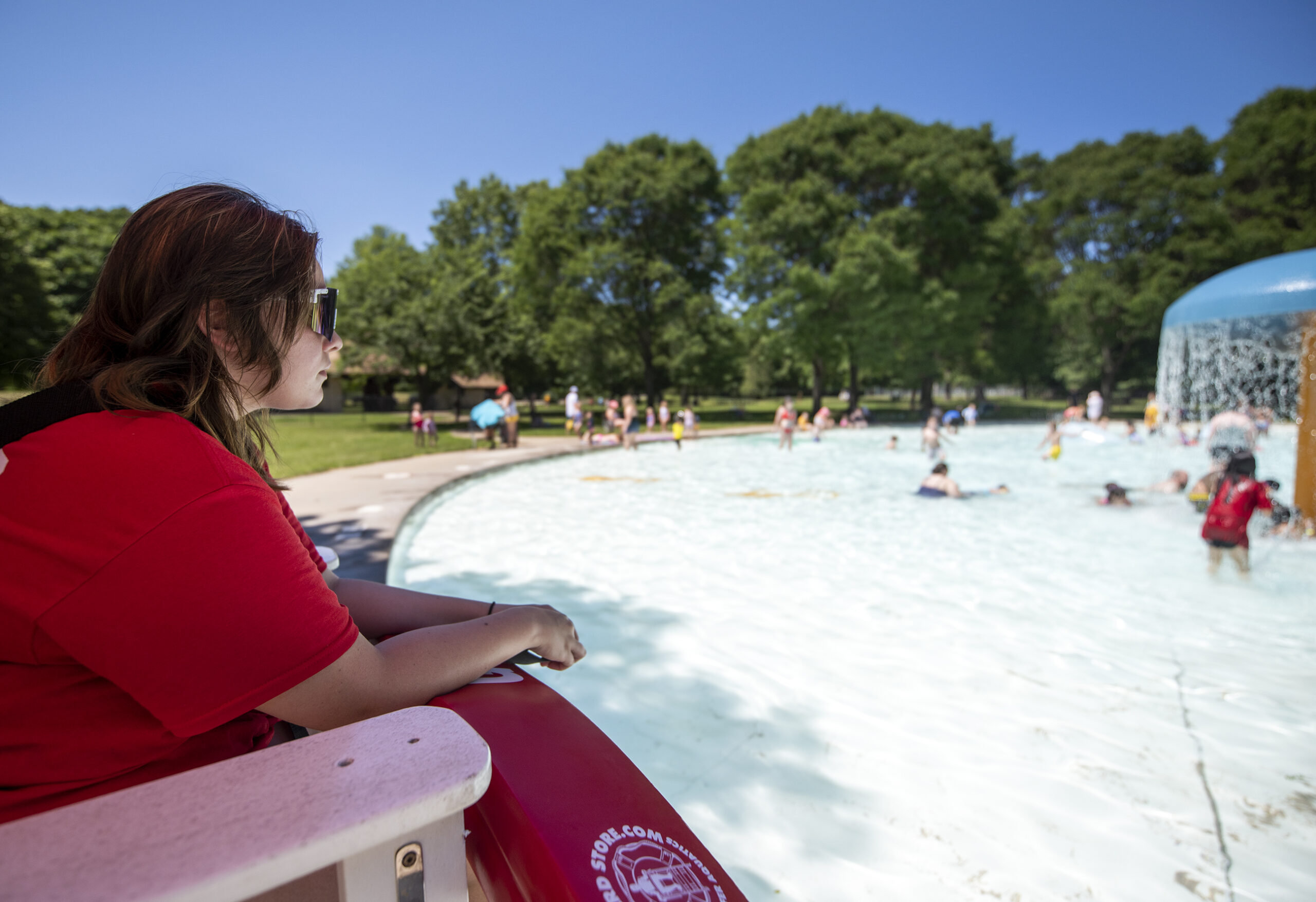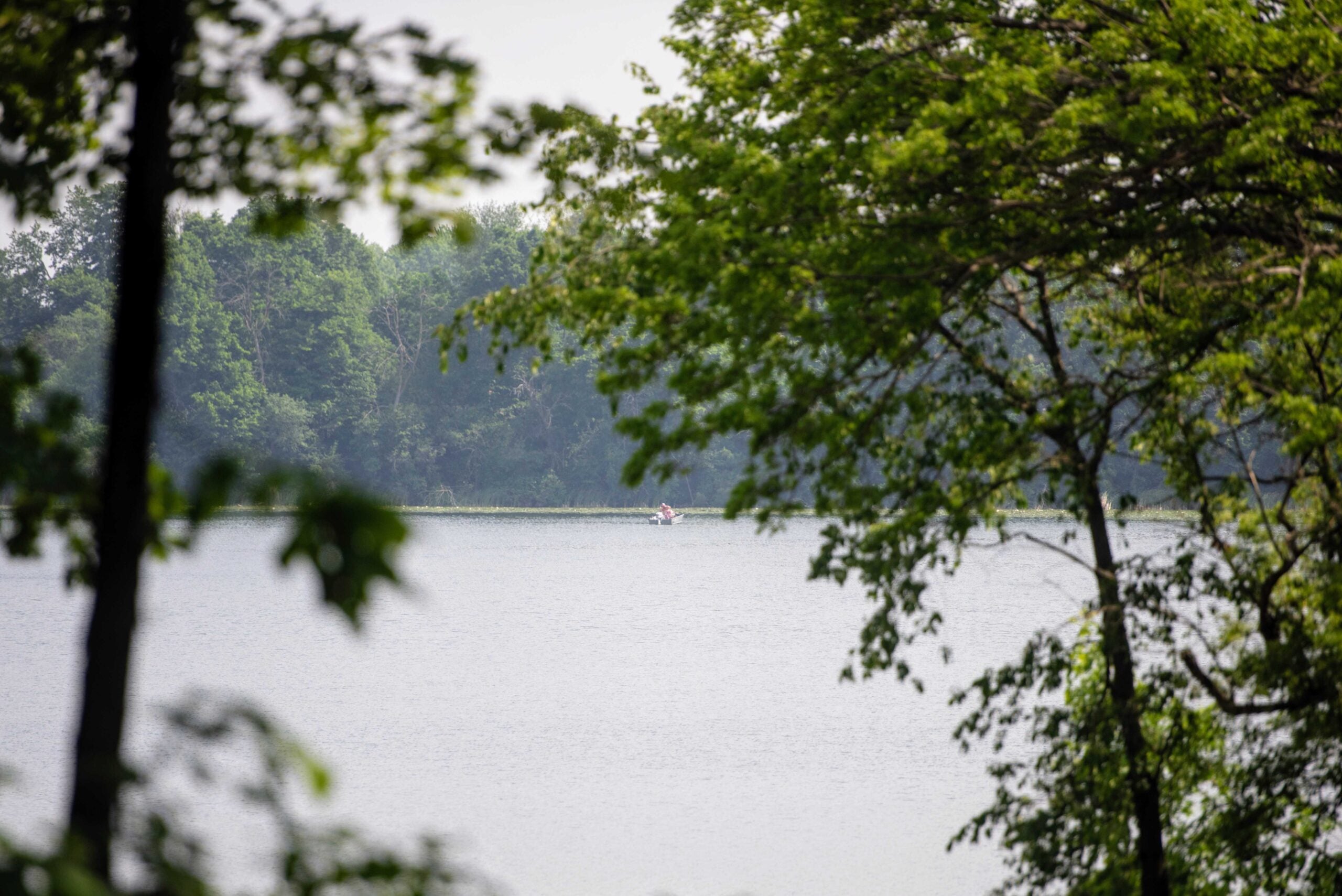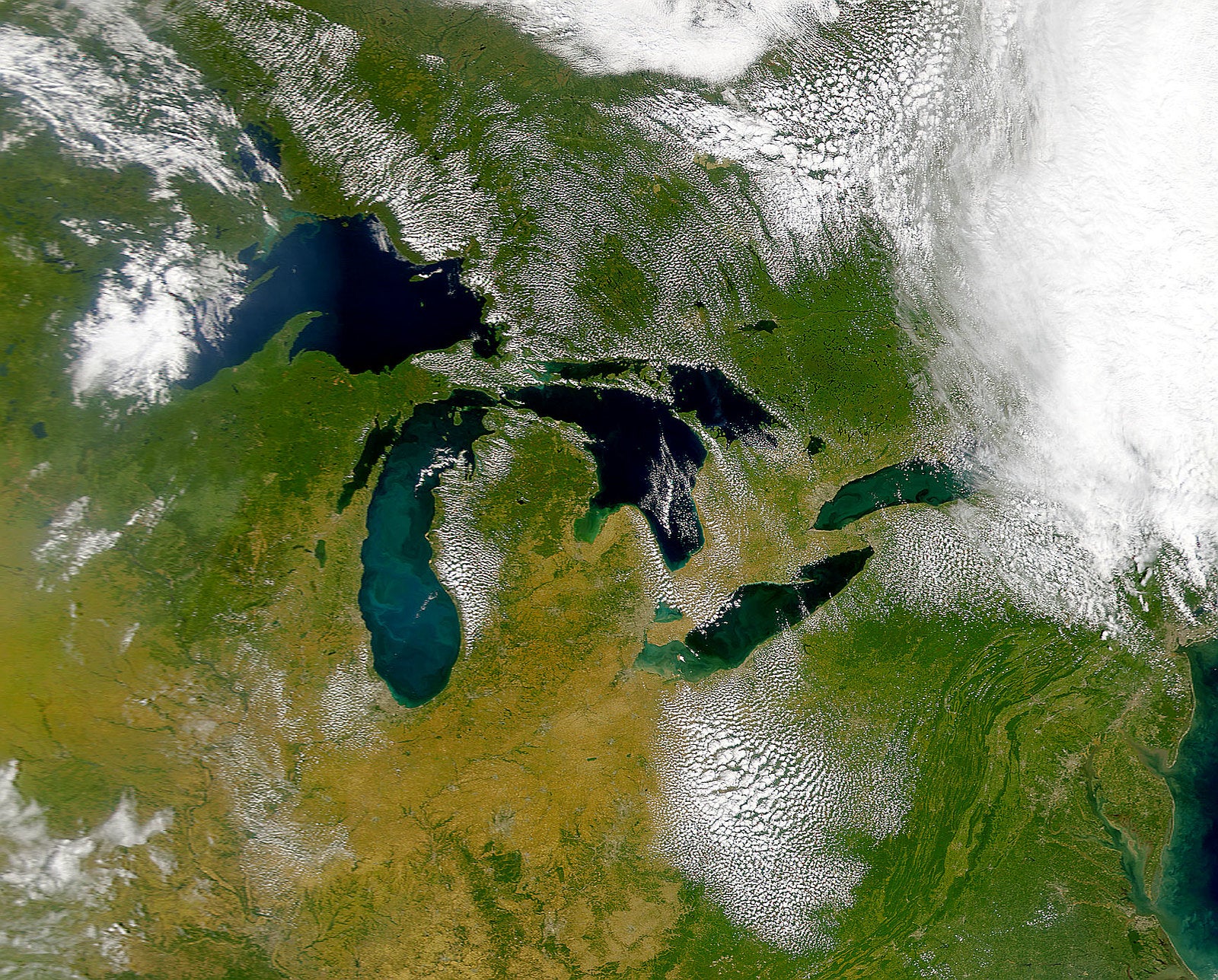While much of the southern United States has been suffering through a record heat wave, temperatures in Wisconsin have been below average this month despite a statewide drought. But those mild temperatures in the state may be coming to an end as the hottest conditions of the summer are expected to move in next week.
Steve Vavrus, climate scientist and director of the State Climatology Office, said July has been about a degree-and-half cooler than average in Wisconsin so far. The normal temperature is 69.5 degrees Fahrenheit, which represents the average between the daytime high and low.
“Given the fact that usually when we have major droughts, we are also having a major heat wave, this year has been unusual,” Vavrus said.
News with a little more humanity
WPR’s “Wisconsin Today” newsletter keeps you connected to the state you love without feeling overwhelmed. No paywall. No agenda. No corporate filter.
As of Friday, roughly 116 million Americans live in areas that have been hit by a heat wave that has lasted for weeks. Areas of Europe, Asia, Africa and the Middle East have also been hitting record temperatures.
Vavrus said what’s saved Wisconsin from the heat so far is also what’s contributing to the state’s drought conditions. Northerly wind flows from Canada have brought dry and relatively cool air, as well as wildfire smoke. But that’s set to flip next week when winds are flowing from the southwest, according to Jon Martin, professor in the Department of Atmospheric and Oceanic Sciences at UW-Madison.
“We’re bound to see temperatures flirting with 90 (degrees) every day — probably above 90 on some of the days next week,” Martin said. “So that’ll be probably the hottest seven-day period that we’ve had all summer long.”
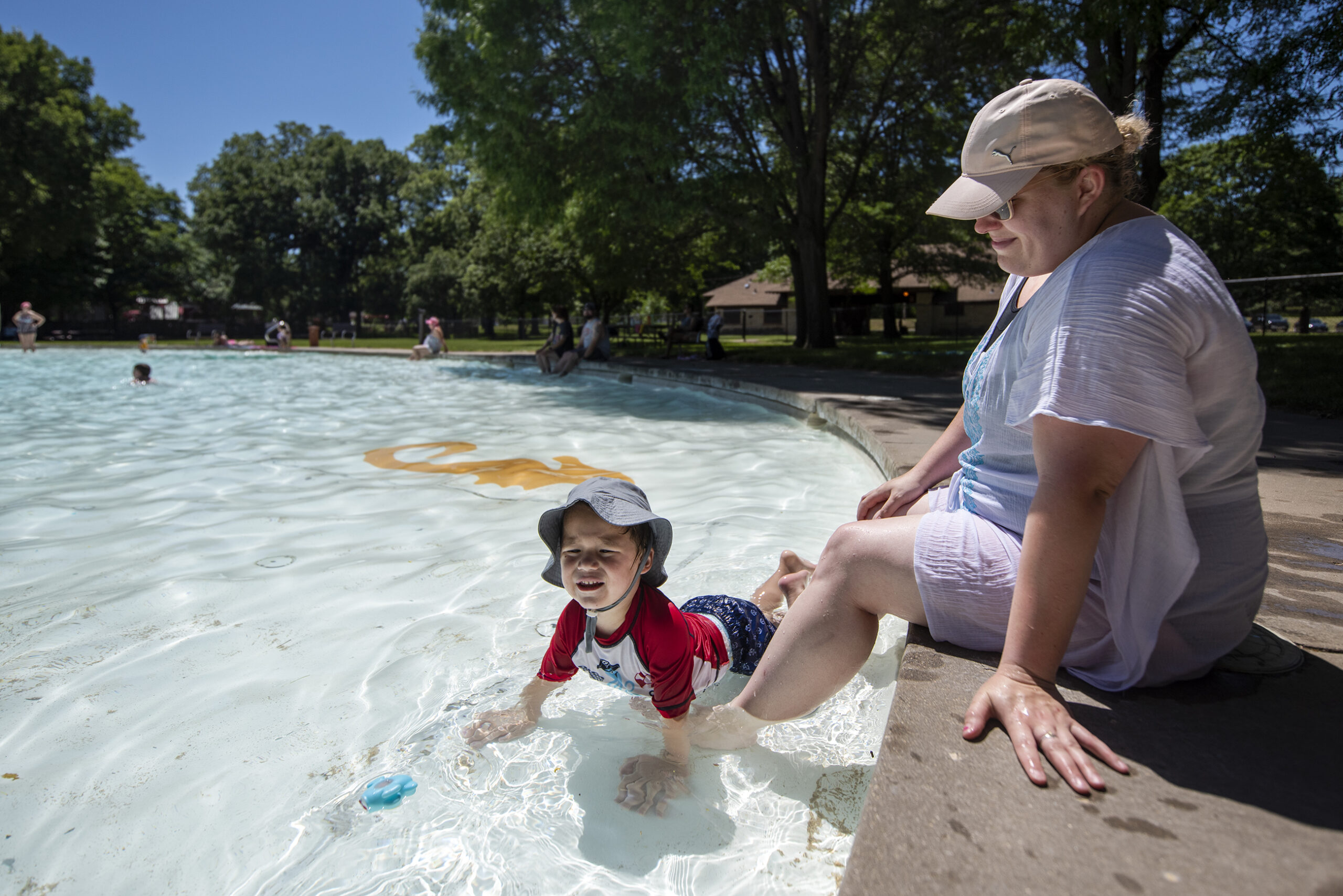
Madison, which is experiencing extreme drought conditions, has only had seven 90-degree days so far this year. Vavrus said that’s far below what the state has seen during other drought-stricken years in 2012 and 1988.
Martin said the end of July and early August tend to be the hottest days of the year, so the heat rolling in next week will not be uncommon. But the shift in conditions will feel unusual compared to the summer so far, and he added the whole state is likely to feel it. Along with rising temperatures, he said there will also be a substantial increase in moisture, making it muggy and hot.
Climate and health experts urge people to take steps to limit their risks from extreme heat, noting the elderly, children, and people with chronic health issues are most vulnerable. Outdoor workers and those who are unhoused may also experience some of the worst effects of extreme heat due to prolonged exposure, according to Pamela Guthman, a public health nurse and board member of Healthy Climate Wisconsin.
“When you get to 105 degrees with either high temps and humidity combined or just high temps, your core body temperature is so high that it’s difficult to bring down that temperature,” Guthman said.
The Southwest has seen a record-breaking heat wave for both its length and extreme temperatures, and past research has shown record high temperatures have occurred twice as often as record lows in recent decades amid global warming. As dangerous heat continues, heat waves are expected to become longer and more frequent in the future due to climate change.
In Wisconsin, temperatures have increased by around 3 degrees since the 1950s and are expected to warm between 2 and 8 degrees Fahrenheit by mid-century, according to the latest report from the Wisconsin Initiative on Climate Change Impacts. While Wisconsin is warming in every season, Vavrus said the state has not yet seen an increase in extreme heat during the day.
Even so, the number of days hotter than 90 degrees is likely to triple in Wisconsin by mid-century, and Milwaukee could see three times as many days with a heat index above 105 degrees by 2050.
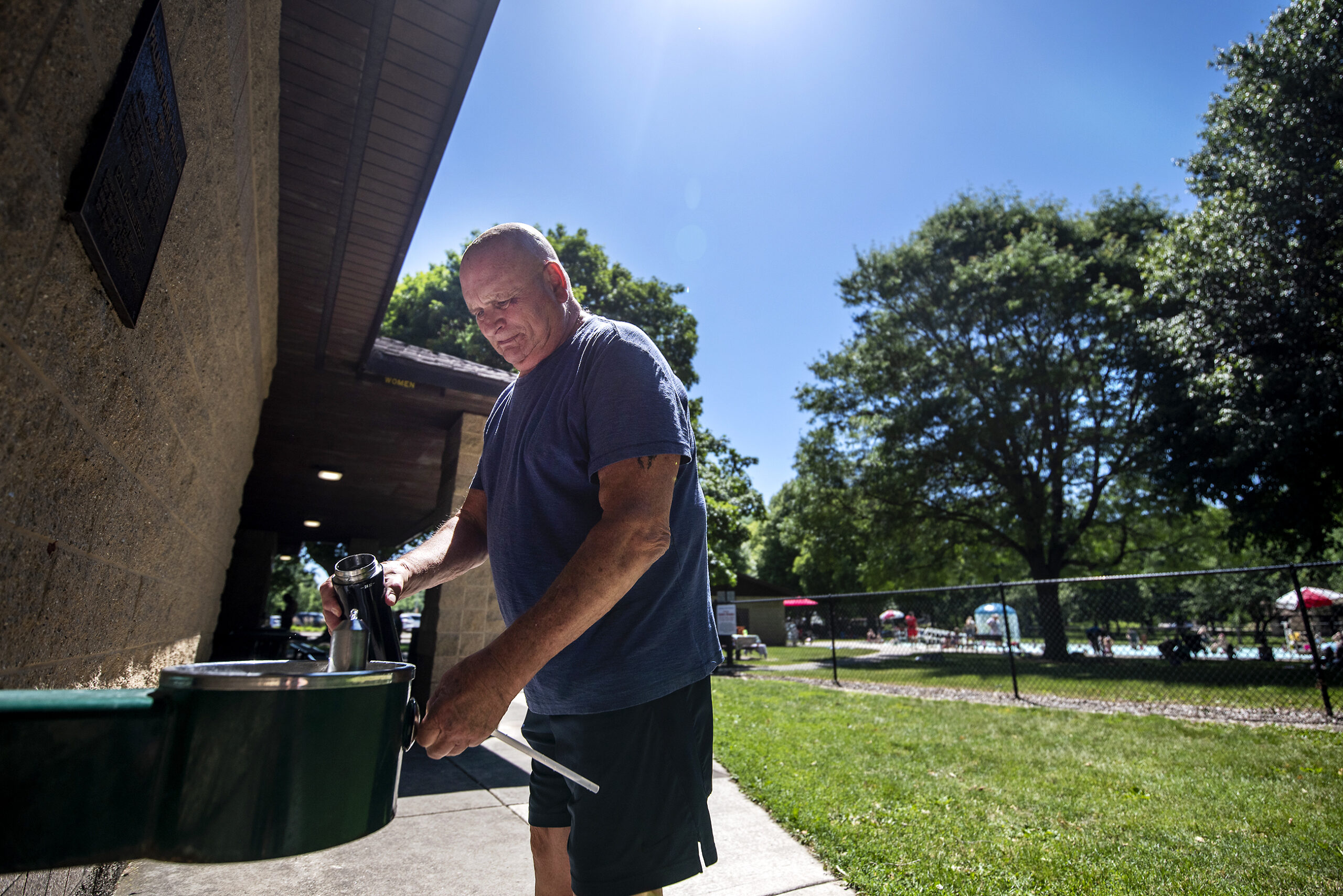
Vavrus said Wisconsin is actually seeing more extreme heat at night. The state is likely to see four times as many hot nights where the temperature doesn’t drop below 70 degrees.
Among state weather stations, Vavrus said only Milwaukee has had nights where the temperature has remained above 70 degrees this year. A recent heat-mapping campaign found heavily developed urban areas of the city stayed about 10 degrees warmer at night than other parts of Milwaukee during hot summer days. State health officials have also found low-income residents and people of color are at higher heat risk in the center of the city and along highways.
Too many warm days and nights can stress the body, making it difficult to recover. Climate and health experts advise people to stay hydrated, seek out shade, limit outdoor activities, or take breaks if they begin to feel dizzy or fatigued. Public cooling centers and a program to provide free air conditioners are other examples of ways to reduce risks.
The Eras Senior Network serves older adults in Milwaukee and Waukesha counties, and the nonprofit received a grant from Bader Philanthropies to buy and install 100 air conditioning units for eligible seniors in the Harambee Neighborhood of Milwaukee. Freda Wright, the group’s program manager, said they have 50 units that they’re offering for free this year. She said Colliers Training Institute helps with the installation, and people can contact her for units that are still available.
“Some of our seniors can’t go to cooling sites,” Wright said. “So especially for those ones who can’t do that, we’re able to bring the cooling site to their home wherever they want to sleep.”
Wright said one woman suffering from respiratory problems was sleeping in her living room until she was able to receive an air conditioning unit because her bedroom was too hot. More than half of Milwaukee households felt too hot at times in 2021, according to an assessment by state health officials and community partners. About a third of the city’s households had heat-related symptoms.
Extreme heat kills more people nationwide than any other weather event, according to most recent data from the National Weather Service. In 1995, a massive heat wave killed hundreds of people in the Midwest, including 154 heat-related deaths in southern Wisconsin. Last year, preliminary data from the Wisconsin Department of Health Services shows the state had 14 heat-related deaths and more than 700 emergency room visits for heat-related illnesses.
Wisconsin Public Radio, © Copyright 2026, Board of Regents of the University of Wisconsin System and Wisconsin Educational Communications Board.

